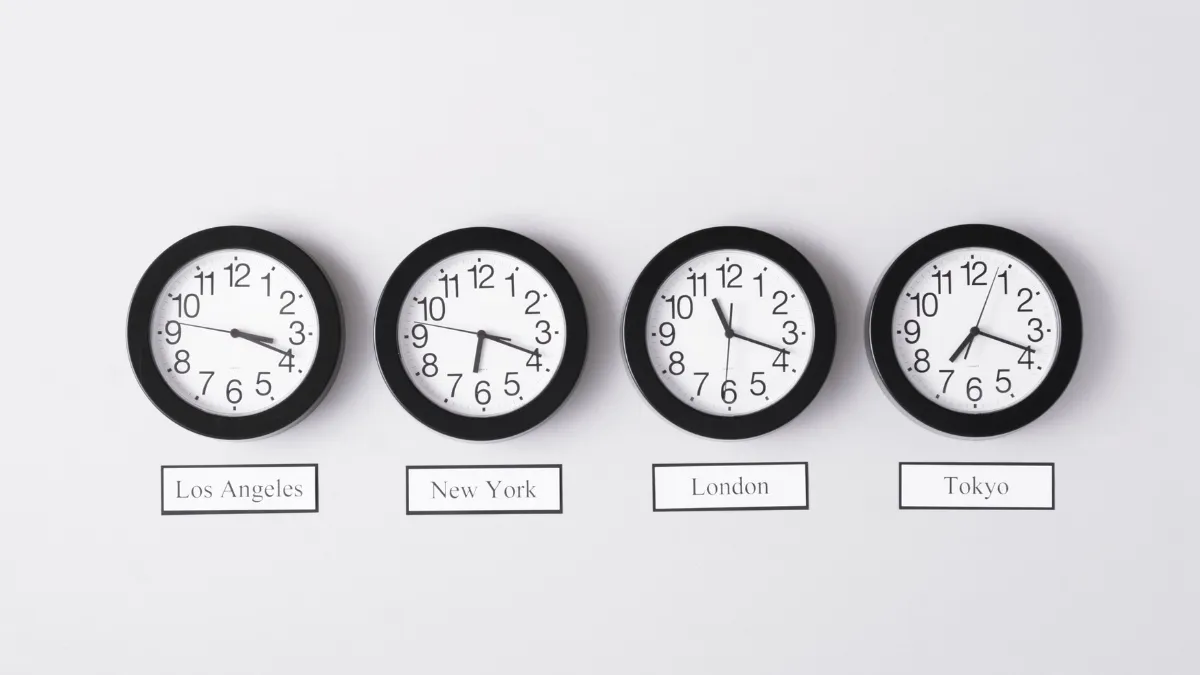Foreign Exchange Trading Sessions: Global Market Overview
The foreign exchange market is one of the largest financial markets in the world, with a daily trading volume exceeding 7.5 trillion USD. It operates 24 hours a day, open continuously from Monday to Friday, allowing traders around the world to trade according to their schedules. This is because major global financial centers are located in different time zones; when one market closes, another opens. Understanding the different trading sessions in the foreign exchange market can help you choose the best trading times to enhance trading efficiency and profit potential.
1. Major Trading Sessions in the Foreign Exchange Market
The 24-hour operation of the foreign exchange market is supported by the opening and closing times of different global financial centers. The market is divided into four main trading sessions, each with its own characteristics and peak trading volumes:
- Sydney Session: This is the start of the foreign exchange market, but trading volume is usually low. It prepares for the opening of the Asian market.
- Tokyo Session: The opening of the Asian market marks an increase in trading volume, especially with significant fluctuations in currencies from the Asia-Pacific region such as the Japanese Yen and Australian Dollar.
- London Session: London is the center of global foreign exchange trading, and trading volume rapidly increases after the market opens. European currencies such as the Euro (EUR) and British Pound (GBP) experience significant fluctuations during this time.
- New York Session: The New York market overlaps with the London market for a few hours, making this the most active time for the market, as both major financial centers are open simultaneously.
2. Characteristics of Each Trading Session
Sydney Session:
- Opening Time: 22: 00 GMT (Sunday) to 07: 00 GMT (Monday)
- Major Currency Pairs: AUD/USD, NZD/USD
- Characteristics: Market trading volume is low, and volatility is small. Suitable for traders with lower risk tolerance or short-term trading strategies.
Tokyo Session:
- Opening Time: 00: 00 GMT to 09: 00 GMT
- Major Currency Pairs: USD/JPY, AUD/JPY, EUR/JPY
- Characteristics: Asian currencies (such as the Japanese Yen) and commodities currencies (such as the Australian Dollar) experience significant fluctuations, suitable for traders who prefer the Asian market.
London Session:
- Opening Time: 08: 00 GMT to 17: 00 GMT
- Major Currency Pairs: EUR/USD, GBP/USD, EUR/GBP
- Characteristics: London is one of the centers of global foreign exchange trading, with extremely high trading volume and significant market volatility. During this time, liquidity is strong and spreads are small, making it suitable for short-term traders and volatility strategies.
New York Session:
- Opening Time: 13: 00 GMT to 22: 00 GMT
- Major Currency Pairs: USD/JPY, EUR/USD, GBP/USD
- Characteristics: There is a few hours of overlap with the London session, and market volatility peaks during this time. This period is particularly suitable for trading currency pairs related to the US Dollar.
3. Overlaps of Trading Sessions: Best Trading Opportunities
When different trading sessions overlap, the foreign exchange market typically experiences the highest trading volume and volatility. These periods are often the most active times for traders, as market liquidity is ample, spreads narrow, providing a favorable trading environment for short-term and intraday traders.
- Tokyo-London Overlap (00: 00 GMT to 08: 00 GMT): During this time, trading volume is lower as the Asian market is about to close while the European market has just opened.
- London-New York Overlap (13: 00 GMT to 17: 00 GMT): This overlapping time is the period of highest trading volume in the foreign exchange market, as both the European and American financial centers are active simultaneously. During this time, spreads are smaller, and liquidity is extremely strong, making it an ideal time for short-term traders.
4. Best Strategies for Different Trading Sessions
Tokyo Session:
- Low volatility, suitable for intraday trading and small range oscillation trading.
London Session:
- Strong liquidity and high volatility, suitable for trend-following strategies and breakout strategies.
- Traders during this time can capitalize on the strong market trends to gain profits.
New York Session:
- Overlapping periods have the highest volatility, suitable for short-term and swing trading strategies.
Conclusion
The global nature and 24-hour operation of the foreign exchange market provide traders with a flexible trading schedule. By understanding the characteristics of each major trading session, overlapping times, and best trading strategies, you can choose the trading times that best suit you to optimize trading results. Whether you prefer short-term or long-term trading, effectively utilizing these sessions will help enhance your trading efficiency and profitability.
Hi, We are the Mr.Forex Research Team
Trading requires not just the right mindset, but also useful tools and insights.Here, we focus on Global Broker Reviews, Trading System Setup (MT4 / MT5, EA, VPS), and Forex Trading Basics.
We personally teach you to master the "Operating Manual" of financial markets, building a professional trading environment from scratch.
If you want to move from theory to practice:
- Help share this article to let more traders see the truth.
- Read more articles on Broker Tests and Forex Education.





